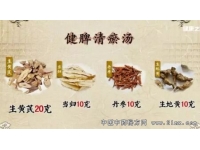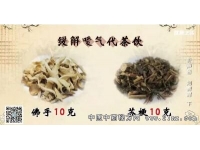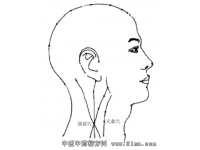|
【作者介绍】刘小宁,毕业于北京中医药大学,先后在北京中医药大学东直门医院骨科,北京友谊医院骨科工作,有幸师从刘寿山的传人孙树椿系统学习宫廷手法,从医30年,从事中西医临床和教学工作,现为加拿大大不列颠哥伦比亚 省注册高级中医师(Dr TCM ),在温哥华一家中西医疗中心工作,并且担任中医专家来开讲电视节目主持人。
由于现代社会人们所处的环境和生活的方式,导致颈椎病的发生,主要影响的是“筋”,相应的内脏器官是“肝”。“肝主疏泄” “肝藏血”“肝主筋”“肝主身之筋膜”等理论对颈椎病的治疗有指导的意义,反映在选用的手法及其应用两方面,具体以揉法为主,力量以轻柔为主,同时注意生活方式的调整和“筋”的功能锻炼。
Manual therapy of cervical spondylosis
The cervical spondylosis occurrence due to our environmental and life style that affected the sinews(Jin) of the body in TCM point of view. The organ-system in TCM is Liver which correspondingly store the blood , dominate the Qi movement, and sinews and fasciae function especially according to the liver system. So when we select the method related to the liver-system, the common method of Tuina -the kneading manipulation should be the key one. The force is supposed to mild and moderate to relaxing and soothing the sinews and fasciae. As well select the appropriate stretching and strengthening methods and modifying the life style also are important.
铅笔分割线
颈椎病的常用手法
【作者介绍】范娅莉,1984 年毕业于山东中医药大学中医系,毕业后留校任针灸系推拿教研室临床教师,及附属医院推拿科医师,1994年晋升为讲师和主治医师,1996年破格晋升为副教授和副主任医师。1996年来美国佛罗里达中医学院任教,2001 年在佛罗里达Tampa 创办并经营 Bay Area Oriental Family Practice,PA 至今。在中国编写并出版:《小儿常见病推拿》,以及《英汉对照使用中医文库》的小儿推拿部分,另外参加了一些中医系列丛书的编写。发表中医论文十余篇。在美国编写“ Chinese Self-Massage Therapy" 和“Chinese Pediatric Massage Therapy"。
一、适当的推拿手法和针灸结合,提高疗效。
1,有利于病人放松,以提高针灸疗效。
2,消除病人对针刺的紧张心理。
3,还可以边推拿边问诊,按压穴位,诊断治疗同步,节省时间。
二、不同类型颈椎病的常用手法。
1,颈型:颈肩背部手法为主。俯卧位:用㨰法:放松肌肉痉挛,按揉风池,风府等穴,拿揉颈项部,拿揉肩井,掌擦颈项,背部和腰部。仰卧位:颈部拔伸。用于治疗颈椎病导致的头痛效果较好。
2,神经根型:颈型基础上加㨰上肢,拿上肢肌肉,上肢拔伸,拔伸手指,抖上肢。
3,椎动脉型:多擦颈项部,拿五经。
4,交感型:多按揉颈侧部,加推桥弓,按揉内关。
5,脊髓型:颈项,背部,下肢多用㨰法,擦法。在美国,针灸诊所少见到这一类型。轻度可治疗,重者应推荐到专科医生。在中国治疗过一些轻度脊髓型颈椎病有效。
6、混合型:根据不同类型灵活掌握。
三、根据疼痛的程度和性质施术。
1、急性期,疼痛重者,局部手法应轻柔,加远道取穴。腰部手法较重,拿委中,拿合谷。
2、慢性期,疼痛轻者,局部手法较重,使热感渗透。拿肩井,按揉风池。
The common Tuina manipulations for treating cervical spondylosis
1. It can be more effective if combining Tuina with acupuncture.
2. The common Tuina Manipulations for different type of cervical Spondylopathy.
3. How to using different Tuina techniques according to the severity and the nature of the pain.
铅笔分割线
颈椎病可能忽视的问题
王少白1.jpg
作者介绍
王少白,河南中医学院本科(78级)、广州中医药大学硕士(85级),师从司徒铃和靳瑞两位教授、中医第一批破格徒弟(跟随靳瑞教授,1991年),并执教于广州中医药大学针灸系和国际针灸培训中心,广州中医药大学第一附属医院针灸医生(1986-1991年)。1991年以访问教授来美哥伦比亚大学医学院,后转为post-doctoral research fellow,research scientist1 991-2004。1993年开始在美国行医,1998年在曼哈顿正式开业至今。期间上CBS News一次、其他电视台电台数次、以及一些报刊。并受邀于纽约大学医学院数次、受邀于Columbia University医学院、Mt.Sinai 医学院、Harvard University、Colgate 公司等讲解中医针灸。大家庭里共有七名医生包括两名国家级高级专家,发表文章、图书章节30余篇。2000-2005 在纽约一些中医针灸学院授课,深得学生喜爱(从5个学生到超过100学生追随)。病人中名人无数其中包括超级球星、奥斯卡获奖者、超级主播、Mr.USA、Mr.Universe、Tammy 奖获得者及一些政要,同时也救治很多疑难病症包括很多医生及其家属. 医生病人来自哥伦比亚大学长老会医院、Mt.Sinai医学院附属医院、耶鲁大学医学院附属医院的医生教授等。
在欧阳医生的带领下,前面大家讲得都非常好,全部支持赞同,只是还有一点内容,是否在临床上容易忽略,希望大家批评指正。
1. 由于时代变迁、环境不同,生活节奏越来越快:讲电话,使用手机、电脑、驾驶、办公室工作……不自觉地长期保持固定体位,尤其是颈椎的体位固定太长时间等;或压力、紧张等精神因素使肌肉等软组织长期处于痉挛状态等均使颈椎病年龄有提前倾向。
2.由于在初期或起病阶段,常常是软组织变化,或者是脊柱变化太细微或尚未影响到敏感的神经纤维等,以至于X光或MRl查不到,或病人没反应或反应很轻微而被忽略。因此,现代医学检查手段查不出,或病人没颈椎病的症状表现,不表示没有颈椎病。因此,只要有颈椎病的表现或体征,在排除了其他相关疾病的前提下,则不必拘泥于X光或MRl阴性结果,甚至有时病人没有颈椎病的表现,但有相关的软组织紧张或引起紧张的因素等,则都可以以治疗颈椎病的方法治疗,并往往取得好的效果。你也许可以说这实际上也是治未病的内容之一,即所谓“未病先防,既病防变”。
实际上,治未病对颈椎病也是非常重要的。所以教育、要求病人改变不健康的生活习惯:不要保持同一姿势太久,长时间不活动、放松,调节电脑屏幕高度,换手用滑鼠等等,对已病或未病者都是有益的,尤其是有可能引起颈椎病的软组织或颈椎病后容易涉及的软组织等。
3. 治疗上除各位老师的好方法外,还可以用糖针法:整体观念,辨证论治,尤其是阿是穴/区,夹脊、背俞穴,脏腑、经络辨证,以及治神、肝/筋、脾/肌肉、肾/骨的重要性。加上神灯,火罐,必要时加中药。
4. 一般来说,对于成年人患者,颈、腰椎病,常常互相影响和掩盖,所以治疗上常常需要一起兼顾。
5. 由于颈的位置,常常牵一发而动全身:从西医讲,头颈以下的血管神经支配皆通过此;从中医论,阴阳脉之海的任督二脉,以及手足三阳经皆通过此处。所以说“百病皆生于颈椎”也不为过。
6. 临床上,中医针灸可以避免手术,但对三个椎间盘突出以上的,则可能有当别论。
Problems possibly ignored regarding Cervical Vertebrae and Disc Disorder
Under the leadership of Dr. Ouyang, all the speakers have done a great job regarding Cervical Vertebra and Disc Disorder (CVDD). I support them completely without any objections. However, I just have a few more things to say which clinically can be ignored easily. I hope you can point out if anything you consider is not correct:
1. Due to the change of time and environment, the pace of life is getting faster and faster: the use of telephones/cell phones, computers, driving, office work, etc. All of these daily activities involuntarily keep us in the same position for a long time, especially the neck vertebrae and the related areas. Also long time stress, pressure and anxiety, etc. can cause the soft tissues in the neck and upper back area to tense up or spasm. Both above situations make this CVDD occur at a younger and younger age.
2. At the early stage of the CVDD, since it is often only the soft tissue changes, or the spine change is too tiny, or the X-ray or MRI could not detect the change, or the patient has no reaction or the reaction is too tiny for the patient to notice, therefore, even if the patient comes with negative results of the X-ray or MRI, or the patient has no complaints of CVDD, it does not necessarily mean that they do not have CVDD. Therefore, as long as the patient has complaints or signs of CVDD, and after making sure no other diseases are involved, we do not need to rely on the negative results of the X-ray or MRI. Plus, there are times when, the patients have no complaints or symptoms of CVDD, but they have the situation/environments which could cause the related soft tissues to spasm and tension. Then we can just treat it as CVDD and very often, we get good results. You may say this actually sounds like "treating no diseases," that is, "treating no diseases and maintaining wellbeing, preventing the disordered part from getting worse.”
In fact, the "treating no diseases" idea, in other words, disease prevention, is also very important for CVDD. That is why we need to educate the people/patients to change their unhealthy life styles, meaning: do not keep same position for a long time, no exercising or relaxation for a long time, keeping the height of the computer screen at the same height without adjustment periodically, use of the same hand for the computer mouse always etc. All these suggestions are good for CVDD, especially to relax the soft tissues which could cause CVDD or the soft tissues which could be affected by CVDD.
3. For treatment, apart from the previous doctors' methods, we can also apply Tangzhen(糖针): the holistic pattern differentiation especially Ashi points/Area, Jiaji points, back shu points, differentiation according to organs or channels, as well as the importance of the treatment of Shen/spirit, liver/tenders, ligaments, spleen/muscles, kidney/bone. Plus TDP Lamp, cupping, and Traditional Chinese Herbals Medicine, if necessary.
4. In general, for adults or elderly patients with CVDD, the lumbar vertebrae and disc disorder (LVDD) is often involved too and vice versa. Sometimes the patients do not realize they have both problems because these two problems often cover each other and it is just a matter of which one is more serious. So for treatment, it is better to treat both, even though the patient does not complain about the LVDD and vice versa.
5. It is obvious that the neck area is the only connection between the brain and the body. In modern western medicine the supply of the blood to the brain and the nerve dominates the other parts of the body except for the facial area. Even in TCM and acupuncture, many channels pass through here, such as Ren & Du channels, as well as the hand and foot yang channels etc. Because of the importance of the neck, so many diseases and conditions can be associated with this area. So it is not too much to say that many diseases and conditions could be associated or due to CVDD.
6. Clinically, many CVDD surgical procedures can be avoided by the treatment of TCM herbs and acupuncture. However, if it is more than three discs herniation involved, the story could be very different.
|



